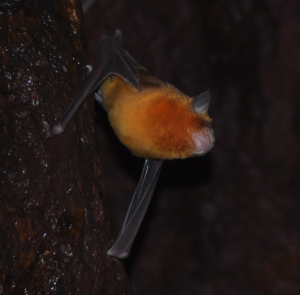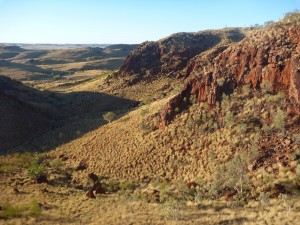Western Australia’s mining powerhouse, the Pilbara region, contains several species of threatened bat whose prime habitat occurs within ore-bearing, ironstone ridges. One of these species, the Pilbara Leaf-nosed Bat, is found nowhere else in Australia and another, the Ghost Bat, is Australia’s only species of carnivorous bat. Mining companies and other stakeholders are very interested in monitoring local populations of threatened bats to ensure that adverse impacts do not occur during mining.
MWH has implemented major monitoring programmes for several years, and now in 2014 is excited to announce that more than 2,000 nights of data have been amassed. Over the last two years alone, MWH has recorded and analysed over 4.5 terabytes of bat echolocation data – that’s equivalent to about 6,000 audio CDs! These data have proven invaluable for MWH clients to meet environmental approval conditions, identify mining impacts and understand how best to manage bats.
This milestone has been achieved from monitoring at dozens of mine-site and natural locations in the Pilbara, using echolocation recording devices at the forefront of technological advances in this industry. Our most recent work has seen us deploy a completely autonomous, solar-powered device with a directional microphone, to target one specific part of large cave system occupied by a regionally significant population of Pilbara Leaf-nosed Bats. MWH has also had a similar device in place at another site for over 800 consecutive nights, with which we examined the responses of bats to mining activity such as construction and individual blasting events. These experiences were the subject of our presentation at a recent Pilbara Leaf-nosed Bat Workshop hosted by the Western Australian Department of Parks and Wildlife, which focused on facilitating ongoing research and management of this species.
While MWH uses ultrasonic recording technology to study threatened bats, we are increasingly using similar technology to monitor and survey other threatened species such as the endangered Night Parrot, Australia’s rarest bird. In 2015, we are seeking opportunities to expand the use of the same technology into the exciting realm of bird and frog inventory surveys. If it makes a call, we can record it for our clients!
For further information on services relating to bats, other threatened fauna species or terrestrial ecology in general, contact Dr Blair Parsons at blair.parsons@mwhglobal.com or (08) 9388 8799.


